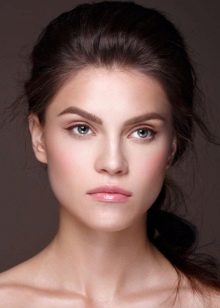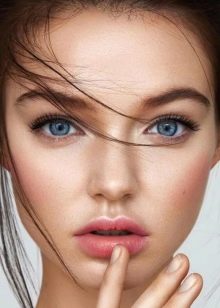All about permanent makeup

Permanent make-up is a modern cosmetic procedure that emphasizes or corrects the shape of the eyes, eyebrows, lips. This is due to the introduction of color pigment into the upper skin. Despite the demand, even active supporters of such a procedure know quite little about its essence, differences from tattooing, variations in technique and facial care after permanent.



What it is?
A permanent is often compared to a tattoo on the skin, but this comparison is not entirely correct. Although there are general signs. In the upper layers of the skin, pigment is really laid, and something like an indelible make-up is obtained on the face. The skin will renew itself, which is natural, and the permanent will start to fade. But this happens slowly, sometimes it lasts 5-6 years. On the one hand, this is an indisputable plus of permanent make-up, on the other hand, it is a minus, because it will not be possible to bring everything back abruptly.



What are the advantages of a permanent:
- time is saved, no funds are needed for a daily make-up;
- the contour of the makeup is even, it is always perfect;
- it can help correct imperfections, make facial asymmetry less noticeable: drooping eyelid, insufficient eyebrow density, small scars, etc.
- the procedure does not leave scars;
- the soreness of the cosmetic manipulation itself is minimal;
- pigment can be removed (albeit not easy).


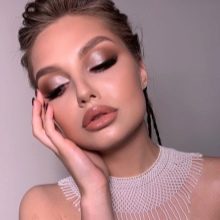
Along with the advantages, there are also disadvantages, for example, the cost of the procedure is not cheap.Also, the permanent will have to be corrected, and the correction can cost around half the price of the initial permanent makeup.
The history of the permanent is connected with the name of Cleopatra, who corrected the contours of the lips and the shape of the eyebrows with tattooing. However, Egyptian men also used a permanent, drawings on the skin were found on them (studies of mummies made it possible to draw such a conclusion). But tattooing is a relative of the permanent, not its synonym. Technically, these procedures are different.


What is the difference from tattooing?
Permanent make-up is a tattoo and it will be forever. Permanent make-up involves micropigmentation, this is the main difference between the procedure. And its stability is also different, it can depend on the effect of the sun on the skin, and even on the characteristics of metabolism. With permanent, skin punctures reach 1 mm, a tattoo is 2 mm. For these procedures, the difference is significant. Dyes and techniques may also differ. The permanent "prefers" natural dyes, due to which it looks much more natural than tattooing. Over time, the pigments will dissolve, dissolve, disappear.
Tattoos are always synthetic additives.

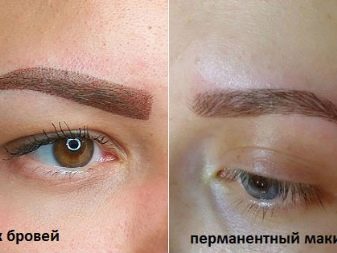
Indications and contraindications
You can start with contraindications. There are cases when a permanent cannot be made. For example, it is not made to pregnant women; during lactation, the permanent should also be abandoned (although often this issue is discussed separately with the master, and if more than 2 months have passed since the birth, you can agree on the procedure).

Don't make a permanent when:
- diabetes mellitus;
- herpes on the face;
- an active infectious or viral disease;
- high blood pressure;
- topical treatment of cancer;
- conjunctivitis;
- allergic skin rashes;
- scratches, cuts and other injuries to the face.


You should not go to a permanent in the postoperative recovery period, right after the illness: the body concentrates on the other, spends energy on rehabilitation. There is no need to load it with wound healing, because permanent makeup is still a wound.
If there are no contraindications, age will not be a hindrance (although minors should not be given a permanent). Somewhere in the salons, they may not take women over 60, but this is definitely an unprofessional approach. Age is not a direct contraindication, everything is very individual.
The main indication is the desire to correct facial features by applying a kind of long-term tattooing. The procedure is done provided that there are no allergic reactions, dermatological diagnoses and injuries to the skin.


Views by area of application
One of the most popular areas in permanent is eyebrow pigmentation. Eyebrow permanent can be performed using manual or hardware techniques. The manual technique is also called microblading, it is carried out using a manipulator handle. So you can draw each hair, make a powdery dusting.
Hardware technology assumes the presence of an apparatus that makes the eyebrows blended, that is, the drawing of each hair is excluded.


Let's see what other zones are drawn with the permanent.
- Eyelids. You can make pigmentation only between the cilia, arrows with shading and arrows without shading.
- Lips. You can do the techniques with a natural color or prefer the effect of painted lips.
Lips, eyes, eyebrows - these are the three "whales" of the permanent. If you want to paint on a mole, this is already a tattoo. Flies, blush, freckles, hairline - the sphere of the permanent also works with this, but such requests are rare and may not be practiced in all salons. Although, for example, more and more specialists are working with the creation of a concealer effect. This will appeal to those who are tired of smearing the skin under the eyes, blue circles every morning. In the salon, the master individually finds a pigment composition that brightens the area under the eyes a little: this helps to mask the blue.True, for some time (a week and a half), the bruises under the eyes will look very ugly, but this is the price to pay for the subsequent cheerful appearance.



Technique types
There are many of them, and one cannot say that some equipment is the most advanced, and some are hopelessly outdated. It all depends on the specific request. It is worth following fashion trends here. In recent seasons, this is obviously a natural make-up. Complex makeup, which now looks more like a filter effect, is no longer relevant. But a fresh face, even skin tone, graceful and discreet emphasis on facial features is what you need.
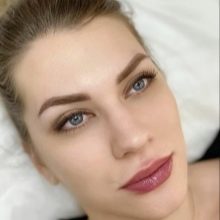

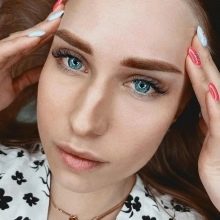
Voloskovaya
When dyeing eyebrows, this is the technique that is used. The pigment in this case will be applied with strokes, so the result will be close to natural. The eyebrows will be wide, thick and lush. As long as it is fashionable, technology will also be relevant. Previously, when the brows were permanent, the outline was simply filled with color and they really looked drawn (called the marker effect). The touches now help the brows look more natural.
There are Eastern and European hair techniques. Eastern is more creative, there the strokes can be very different, they can also look in different directions. But the eastern (Asian) technique is owned by fewer masters, because it is more filigree.
In European hair technique, the strokes are short and, more importantly, the same.


Shooting
This is a shading tattoo. The master uses pigments of different tones. Using an example on the eyebrows, it would be like this: lighter paint at the base and darker at the tips. And the eyebrow contour itself is deliberately softened. It turns out that the specialist drives in the pigment with the apparatus, making the ombre effect. So the eyebrows are both clear and soft in terms of color transition. When shooting for the first couple of weeks, the eyebrows look lighter, it seems that the master has not worked. It is worth waiting a little, and the color will even out, everything will be perfect. But after a month and a half you need to come for a correction, this is important to consolidate the result.


Powder coating
When a specialist has worked with this technique, a lot of small dots remain on the skin. They are difficult to see even up close, so you shouldn't be afraid. The main thing is that from a distance (comparatively) the eyebrows acquire expressive outlines, an even color. The technique can indeed be considered advanced, but nevertheless, the eyebrows obtained using the powder coating technique differ from the natural look. However, the effect of decorative cosmetics is more preferred than the look of the face that exposes the use of a permanent. Simply put, women are more pleased that people see a make-up on them, rather than guess that it is a permanent.

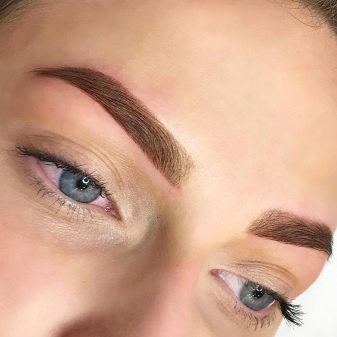
Watercolor
It is considered the favorite technique for permanent lip makeup. The lip contour is painted over in one color, and inside it is filled with another pigment, which is lighter than the contour one. True, no matter how it looks, today such a make-up is irrelevant. The technique is considered outdated, if only because lips are hardly painted like that today. But this does not mean that you definitely need to follow the lead of fashion and give up what suits you specifically.


Microblading
It resembles the process of applying a tattoo as much as possible. The needles are very small and drive the pigment into the skin. And he will be there for up to 2 years on average. A few years ago, this technique was wildly popular, everyone wanted only it, but today microblading is losing ground. Again, due to the fact that naturalness has become more preferable.


Mixed
It is difficult to combine powder coating and hair technique, therefore such a make-up will cost more. But many masters say that this overpayment is quite reasonable. The hairs are first outlined using the hairline technique. And then they (if we are talking about eyebrows) are shaded as it would be when using eyebrow powder / shadow.
At first, the make-up will appear sharp, but after a month (or a little less) it will take on a permanent and more natural look.


Required tools and materials
The master purchases a permanent machine and disposable needles for it. The needles can be with one prong or with three (the latter helps to stretch the color). Replacement cartridges will also be required. Also, the device requires a large supply of pigments of the most popular shades, the palette is selected by analyzing the requests and capabilities of the master, salon.

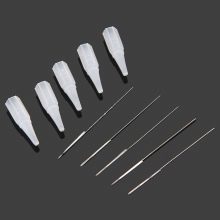

Permanent makeup is not very painful, but it all depends on the client's individual pain threshold and on his psychological mood. In any case, anesthetics are purchased. As well as disinfecting compounds. Almost always, the master at this stage shows the client how the make-up will look: he makes a sketch right on his face. Therefore, he may also have a set of pencils, rulers and even special stencils.
The master also needs a special lamp, because the process is comparable to an ophthalmic procedure and even to the work of a dentist: you need to clearly see everything, notice the slightest discrepancy in colors.


Preparation
Whatever one may say, but a permanent, even the most progressive and best, is a skin injury. This is an interference with the work of the body, for which it is important to be prepared.
How to prepare for permanent makeup:
- do not take blood thinners the day before the procedure;
- do not consume alcohol, coffee, seafood, which also somewhat inhibit blood flow and lymph activity, which is why the pigment is able to fill the skin unevenly;
- take a pigment test if the body is prone to allergic reactions.


In case of herpes (which is more often chronic), it is worth making sure that he is "sleeping" now, and that the last treatment was effective and completed.
Care after the procedure
It is necessary only for the first time, and there is nothing complicated in it: you need to react to swelling and redness, which may well be after a permanent, without panic. The skin will begin to peel off, which is completely normal, and in no case should you touch the resulting crust. Scratching the skin in this area is not necessary, as scratching will only aggravate the irritation. To restore the skin, healing agents are used: it must be disinfected with chlorhexidine, and softened with depanthenol. The last remedy heals perfectly.
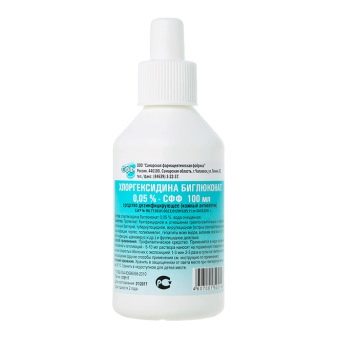

You don't need to do anything else. It is better to refuse baths, saunas, active bathing during the recovery period. As, however, and from sunburn. The master will say how long the skin cannot be wetted, but usually a couple of days is enough.
Sometimes it comes to a week, but everything is not so radical: if the first days cannot be wetted at all, then the water procedures smoothly return to life.
Correction
It is always necessary. How the skin will behave, how the pigment will be distributed in it, not a single master, even the most experienced, knows. Therefore, the correction works as a final touch. It helps to evaluate the result of a permanent, to remove flaws. Subsequently, correction will be required only as the paint disappears. This is not always a complete overlap of the old make-up, but each case requires its own scenario of actions.
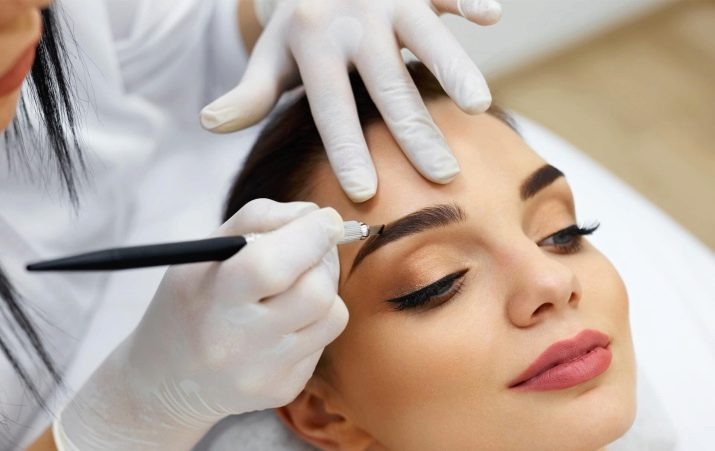
Deleting
Ugly permanent make-up is not a sentence, but it is certainly not easy to wash it off. Laser intervention will be required. Thanks to ultra-short laser pulses that destroy the pigment, the skin cells remove small particles of it. The pigment after the laser procedure will go away in about a month.


Beautiful examples
The following examples show what a successful permanent make-up is.
- Bright eyebrows going up.
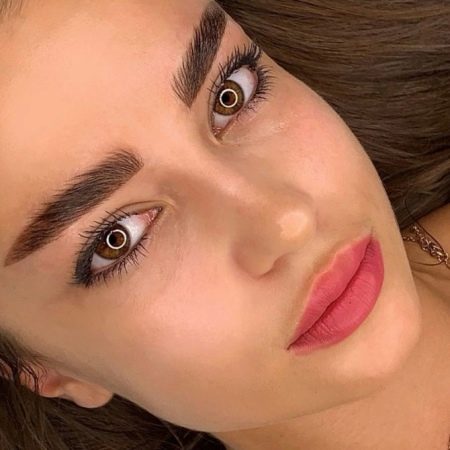
- This is how eyebrows look after a week or two, over time the expressiveness will fade a little, and it will be difficult to distinguish them from natural ones.
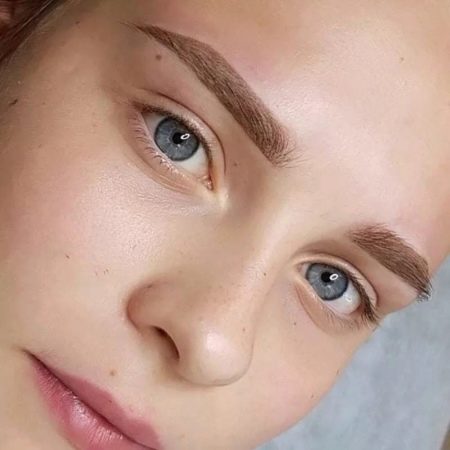
- The eyebrows look as natural as possible, the special handle for the hair technique has done its job.

- A modern permanent can even lead to such a natural effect.But not all masters work so filigree, this is an Asian drawing.

- Light natural eyebrows, but with a very regular shape and symmetry.

- A good natural eyebrow color, and even this kind of natural gloss to the lips can give a permanent make-up.
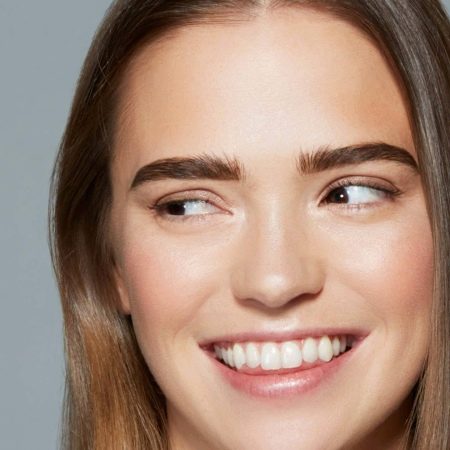
Before going to the salon, you need to familiarize yourself with examples of work, reputation, etc. This is an invasive procedure, and if it is unsuccessful, the consequences can be dramatic.
